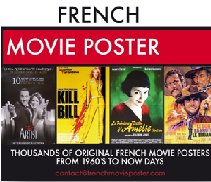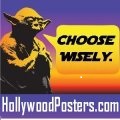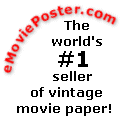The magic lantern -- the first
projector -- has been around since around the 1650s. Soon after its invention
it became a showman's instrument. By the end of the 17th century, wandering
lanternists were putting on small-scale shows in inns and castles, using a
lantern lit with a feeble candle. These shows featured a wide variety of tales
including spirits, goblins and devils -- hence the name the "magic lantern."
The first magic lanterns used candle light.
Through the years every type and variation imaginable as the magic lanterns
improved.
By the end of the nineteenth century, magic-lanterns
were everywhere -- in homes, churches, schools, large-scale halls and theaters,
and as a regular part of public entertainment.
Lanterns came in a variety of sizes and shapes,
from toy lanterns for children, to those used in large halls -- huge brass-and-mahogany,
double-lens machines utilizing slides and lit with "limelight."
The limelight was created when oxygen and
hydrogen were squirted on a piece of limestone which turned incandescent once
the gases were lit, and produced a light as powerful as that in a modern movie
projector. The lantern projected hand-colored slides on a full-sized screen.
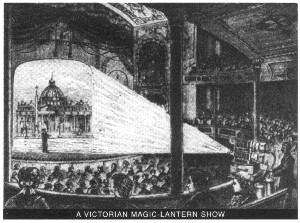 As
the images were projected in a theatrical magic-lantern show, a live showman
and musician provided the "soundtrack," and the audience joined
in creating sound effects, playing horns and tambourines, and clapping, cheering,
and booing. The images changed about every 30 seconds giving the showman a
chance to tell his tale.
As
the images were projected in a theatrical magic-lantern show, a live showman
and musician provided the "soundtrack," and the audience joined
in creating sound effects, playing horns and tambourines, and clapping, cheering,
and booing. The images changed about every 30 seconds giving the showman a
chance to tell his tale.
In America, the foremost magic-lantern artist
was Joseph Boggs Beale (1841-1926), who produced over 1600 images for the
lantern. Beale created wonderful stories on glass slides, the most popular
being stories like The Night Before Christmas, A Christmas Carol and even
illustrated carols like O Holy Night, and animated Christmas cartoons.
The genius of Beale's slides is partly in
the way each slide advances the story plot, providing a new, dramatic, "action
image." But supporting this central image are also details in the picture
which reinforce lines from the story. As the showman dramatizes the action,
the eye of the viewer moves within the picture, picking up details as they
are mentioned, becoming like a latter-day movie camera, zooming in here, panning
there, building texture toward the next dramatic moment.
The magic lantern became so wide spread that
it became quite common in homes across the country. Notice this advertisment
from the 1908 Sears Catalog selling a complete magic lantern kit including
tickets and flyers from $4.98 to $6.85
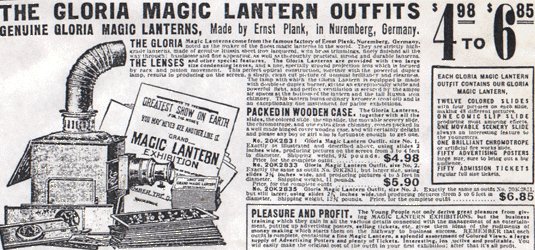
But for all Beale's skill, he could not compete
with the movies. With the advent of "motion" pictures and inexpensive
movie "nickelodeon" theaters, the magic-lantern quickly declined
as an entertainment medium and took on a different roll for theater owners.
Instead of being the main attraction, the magic lantern became the filler
BETWEEN the films.

